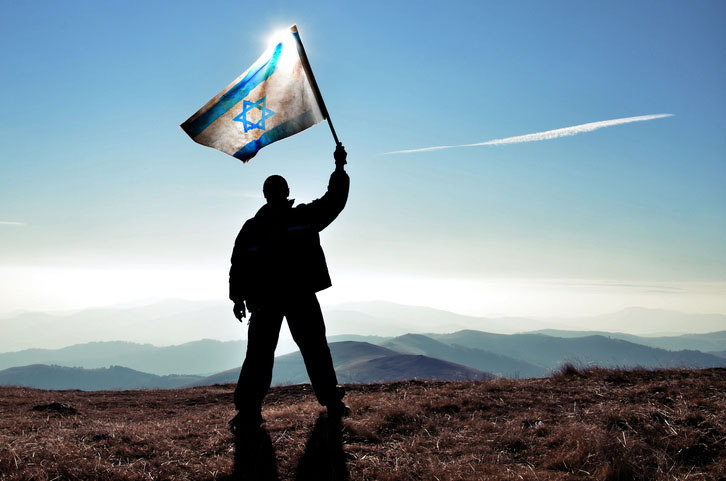In April 1777, in the German city of Trier, Heschel HaLevi was born to a distinguished rabbinic family. His father and grandfather had served as the local rabbis, and his older brother would eventually step into that role. When he was a teenager, the French Revolutionary Army took control of Trier, and brought with it equal rights for the Jews.
Heschel trained as a lawyer. But after Napoleon’s defeat in 1815, the rights of Jews evaporated. Heschel appealed for an exemption; the authorities refused.
Then he made a fateful choice. In 1817, in order to continue his legal career, Heschel HaLevi converted to Lutheranism and took a new name: Heinrich Marx. He later converted his wife, Henriette Pressburg (the granddaughter of a rabbi) and their children as well. Among them was a six-year-old named Karl, who dedicated his life to promoting his own revolutionary philosophy known as Marxism.
Marx’s story was hardly unique. The late eighteenth and early nineteenth centuries saw an extraordinary wave of conversions among German Jews living in large cities. Heinrich Graetz, the renowned 19th-century historian of the Jews, estimated that nearly half of Berlin’s Jews converted during this period. (Decades later, the Nazis would hunt down their descendants, many of whom had no idea they had Jewish ancestors.) Heinrich Heine, himself a convert to Christianity, famously described baptism as “the ticket of admission into European culture.” Like Heine, some were tortured by their decision; and Heine often returned nostalgically to Jewish topics in his writings. Abraham Mendelssohn, the son of the Jewish philosopher Moses Mendelssohn, worried that his conversion would be a betrayal of his father; but he eventually made peace with this decision. (His son Felix would become a distinguished composer, renowned for church music.) Conversion was so commonplace that it didn’t always sever family ties. Heinrich Marx continued to visit his rabbinic brother’s home for Shabbat meals long after his conversion.
Historians debate what drove these conversions. Certainly, antisemitism was a factor; legal restrictions and social prejudice made Jewish identity a liability. But there was something else happening as well. These converts were often educated, prosperous members of the emerging middle class; they were not at all desperate. They believed, just as their non-Jewish neighbors, that one couldn’t be fully Jewish and fully German. So they chose to become Germans. As Deborah Hertz observes in How Jews Became Germans, conversion was often not about Christianity, but an expression of personal and cultural emancipation.
The prosperous Jews of 19th-century Berlin had made a lot of progress, but they still wanted more. They wanted to be “real Germans”; and by converting to Christianity, they could do so.
19th-century Berlin Jewry struggled to maintain their Jewish identity; and so do 21st-century American Jews. We have achieved prosperity and status unparalleled in Jewish history; and with this success comes assimilation. The intermarriage rate in the non-Orthodox community is now at 72%; and a large percentage of those families don’t raise their children as Jews. Among the youngest cohort of Jews, no less than 31% of adults under 30 say it is “not at all” important for their grandchildren to be Jewish.
Success is the greatest challenge the Jews have ever had. A community with the resilience to outlast persecution and discrimination now finds itself at a loss on how to grapple with acceptance.
This would not surprise Rabbi Ovadiah Seforno, as we shall see. There is a difficult to interpret passage in Deuteronomy 8:2–4:
And you shall remember that the Lord your God led you all the way these forty years in the wilderness, to humble you and test you, to know what was in your heart, whether you would keep His commandments or not. So He humbled you, allowed you to hunger, and fed you with manna which you did not know nor did your fathers know, that He might make you know that man shall not live by bread alone; but man lives by every word that proceeds from the mouth of the Lord. Your garments did not wear out on you, nor did your foot swell these forty years.
It is unclear what test the Torah is referring to. What difficulties are they enduring? Aren’t the Jews receiving manna to eat every day? The Ramban focuses on the unreliability of the manna. He explains that has to do with uncertainty:
The Jews did not know how to care for themselves, and they entered the great wilderness, a place without bread, and keeping nothing of the manna in their possession. Instead, it would come down each day, day by day, and when the sun grew hot it would melt. So they hungered for it greatly….
The difficulty the manna represents is insecurity. In the desert, the Jews had nothing to stock their pantry and no stores nearby. And that is the test; will they maintain their faith that God will provide for them?
Seforno notes these verses emphasize comforts the Jews had; their clothing didn’t fray, their feet remained soft, and each day they received a food previously unknown to mankind. This doesn’t sound like a test of deprivation.
He argues it is actually a test of abundance. The question is whether the Jews in the desert will “continue to do His will even if they obtain bread and clothing without hardship.”
This was the question then. And it is very much the question being asked of 21st-century America.
Some have argued that Jews cannot pass this test. Jewish survival might look like a miracle; but it is actually based on persecution. Baruch Spinoza, in The Theological-Political Treatise, makes the following claim:
As to their continuance so long after dispersion and the loss of empire, there is nothing marvelous in it, for they so separated themselves from every other nation as to draw down upon themselves universal hate, not only by their outward rites, rites conflicting with those of other nations, but also by the sign of circumcision which they most scrupulously observe. That they have been preserved in great measure by Gentile hatred, experience demonstrates.
Antisemites might be chagrined to learn that they are the secret to Jewish survival.
Centuries later, Jean-Paul Sartre echoed his view in Anti-Semite and Jew, writing that “it is not the Jewish character that provokes antisemitism, but the antisemite who creates the Jew.” It was the non-Jews who built the ghettos, not the Jews. And in doing so, they kept Judaism alive.
This theory can explain a great deal. Jews have survived crusades, inquisitions, massacres, and pogroms. But we are struggling mightily with equal opportunity and success.
Even religious thinkers acknowledge that, sadly, Jews are more spiritual when suffering. When Napoleon invaded Russia, Rabbi Shneur Zalman of Liadi, the first Rebbe of Chabad, said that he was praying for the Czar to be victorious. He explained he had seen a vision of the future on Rosh Hashanah, and “was shown that if Bonaparte is victorious, the wealth of the Jewish people will be increased and the dignity of Israel will be restored. The hearts of Israel, however, will become more distant from their father in heaven…” The French Revolution, with the blessings of “liberty, equality, and fraternity,” will lead to assimilation, just as it did for Heinrich Marx and so many others.
Like Spinoza, Maimonides also acknowledges that suffering has allowed the Jews to survive; but he offers a very different interpretation. He writes that when speaking to a potential convert, the Rabbi explains to them that “as for the fact that you see Israel in distress in this world, it is because….they cannot receive an abundance of good in this world…lest their hearts grow haughty and they go astray..as it is said: “And Jeshurun grew fat and kicked” (Deuteronomy 32:15).
Maimonides agrees that Jewish suffering is helpful in preserving Jewish identity. But he sees materialism as the culprit; spiritual values will slowly disappear with overabundance. Humans, when comfortable, tend to lose sight of their higher purpose. This is true of both Jews and non-Jews. We all can confuse material gifts for gods.
I would say that Maimonides’ theory tells the story of the Western world, a place filled with material success but spiritually adrift; but Spinoza’s theory tells the story of Berlin’s Jews and American Jewry. People instinctively prefer to conform, to fit into the mainstream. Being an assertive minority, especially one with dramatically different practices, is uncomfortable. It is difficult to say you need a kosher meal, or leave early for Shabbat; it is difficult to argue with a professor who claims to know more about your own homeland than you do. It is difficult to be different.
So when Jews could quietly hide away their identity and assimilate, many of them did.
But one factor not accounted for by Maimonides and Spinoza is how determined Jews are. Antisemitism has brought out a hidden Jewish character trait: defiance. Nachmanides (Deut. 7:7) goes so far as to say that the Jewish capacity for determined chutzpah is why God chose the Jews.
This remains true to this day. Even many assimilated Jews still have an enormous amount of pride. On their own, they may neglect Judaism; but they will stand defiant of those who attack Jews.
And we have seen this defiance since October 8th. As the Jews and Israel have been the subject of hatred and vitriol, many Jews have leaned into their Jewish identity. Studies have shown that of the 83% of Jews who prior to October 7th were “only somewhat,” “not very” or “not at all engaged” in Jewish life, a whopping 40% are now engaging deeply in Jewish life. Jews are now lighting Shabbat candles for the first time, buying mezuzot and Magen David necklaces.
These are October 8th Jews, who rediscovered the Jewish community in the wake of October 7th.
This renaissance has the potential to transform the Jewish community, with so many people returning with renewed idealism and excitement. But the lesson of history is that when things get comfortable again, assimilation will start up again.
So we need to begin thinking about a very serious question:
What will happen after October 8th?
Rabbi Chaim Steinmetz is the Senior Rabbi of Congregation Kehilath Jeshurun in New York.




